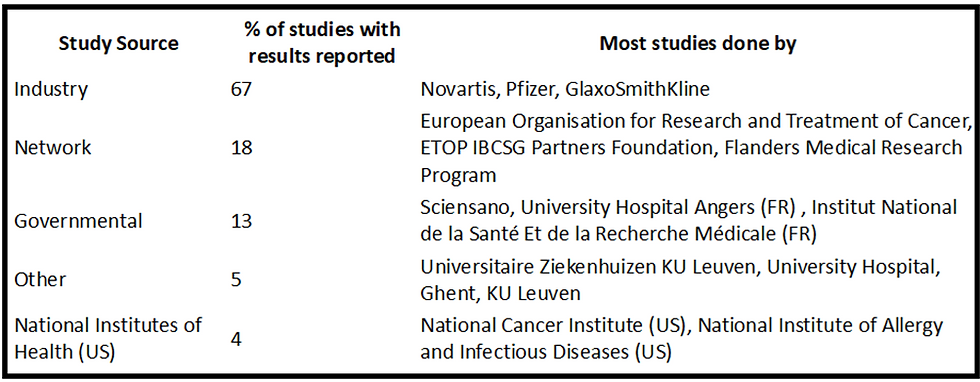Clinical trial reporting in Belgium: facts, trends and patterns
- Till Bruckner
- Mar 6, 2024
- 2 min read
Less than half of Belgian clinical trials have tabular summary results available on trial registries, research by guest blogger Frederik Feys indicates. He found that industry trials are far more likely to publish results in this format.
Why transparency?
Clinical trial reporting is important because it promotes transparency, fulfils ethical obligations, advances scientific knowledge, informs clinical practice, and satisfies regulatory requirements.
Timely reporting of trial results is essential for informing clinical decision-making. Healthcare professionals rely on evidence-based medicine to provide the best possible care for their patients. Access to complete and accurate trial data helps them make informed decisions about treatment options.
Because clinical trial registers structure trial information, they currently are the best way for data scientists to make use of large-scale data to advance health knowledge.
How did I research this?
As a data source, I choose ClinicalTrials.gov, a large trial register that has excellent research capabilities. The register currently holds 485,000 studies, mostly interventional trials.
I extracted data from the studies, facilities, interventions and conditions tables in the PostgreSQL AACT database. After setting up the data model, I used Power BI to visualize some key performance indicators and mapped the locations of trials.
(Note by TranspariMED: This researcher only captured tabular summary results posted on ClinicalTrials.gov. He did not check whether trial results had been made public in the scientific literature. The World Health Organisation recommends that the results of all trials should be made public in both formats because registry results typically contain more and better data.)
Using Python (and some NLP libraries), I traced patterns in the Belgian data that predict clinical trial reporting.
What did I find?
Here’s some background on the project and a sharable link to the Power BI report:
7,422 Belgian studies were registered on ClinicalTrials.gov. 3,353 (45%) had reported tabular summary results.
Biological interventions are in the lead, whereas procedures and devices are lagging behind. Behavioural, dietary supplements, radiation and genetic interventions showed almost no transparency.
For the top five studied health conditions, compared to 2005, one can observe that for every ten studies conducted in 2021, one more study published its results. Rheumatoid arthritis and Crohn’s disease were among the top health conditions having trials with full results transparency.
In a deeper analysis, the health industry showed the largest transparency, the lowest transparency was seen in the academic world and partnerships with US National Institutes of Health.
Some research is done internationally with Belgium partners, e.g. studies run by the U.S. National Institutes of Health.
Conclusions
I found that while 7,422 Belgian trials were registered on ClinicalTrials.gov, only 45% had reported tabular summary results available there, with biological interventions leading in transparency and procedures/devices lagging.
Furthermore, certain health conditions like rheumatoid arthritis and Crohn’s disease showed improved transparency over time.
The analysis also revealed variations in transparency across different sectors, with the health industry exhibiting the highest transparency and academic partnerships showing the lowest.
Frederik Feys is a health data scientist. The blog above describes research that has not been academically published. Please contact Frederik for details via his website, LinkedIn, or Twitter. Some background on this research project can be found here. TranspariMED did not assess the study’s methodological robustness or check the factual accuracy of the data presented in this guest blog.



Comments